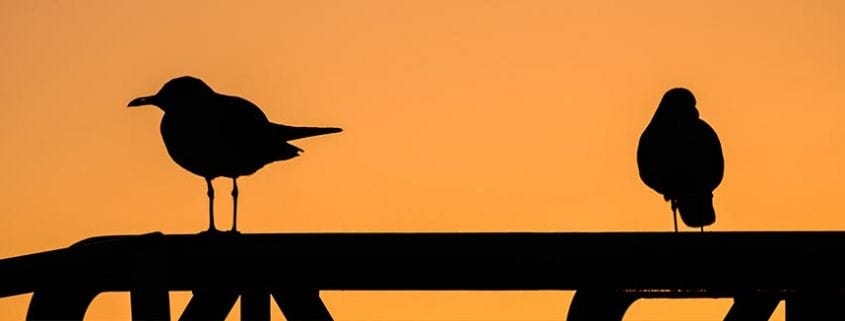Birding in The Florida Keys
The fabulous Florida Keys plays host to a spectacular biosphere of diverse undersea, terrestrial and avian species. Starting in April, flocks of migrating birds, passing through the Keys on their way north, take center stage. Since famed naturalist, John James Audubon arrived in the Florida Keys, April 1832, the island chain has received worldwide attention as a birders paradise. Audubon reported that his, “heart swelled with uncontrollable delight,” when viewing the “mass of birds.”
Florida Birding
The Keys boast several excellent spots in to capture nature’s annual avian air show. In the Upper Keys, the Florida Keys Wild Bird Center, Mile Marker 93.6 in Key Largo is a good place to see many wild bird species – peregrine falcons, great white herons, gulls, owls, ibis, pelicans, osprey, and peacocks. The Center rescues injured, sick and orphaned birds and provides rehabilitation with the goal of releasing them back into the wild. Birds are kept in wire cages and enclosures and may be viewed from a wooden boardwalk path that crosses wetland grounds. Free, but donations support the Center’s cost. For more information: call 305-852-4486 or visit their website.
Islamorada’s Windley Key Fossil Reef Park, a great area for Florida birding, is at Mile Marker 85.5. The park’s 70-plus page Trail Guide, available at the park store, helps visitors navigate the park’s 5 trails. There’s also a five-page illustrated book listing birds that have been seen at the Windley Key Park. Thursday through Monday the park offers an hour-long tour of the 32-acre park starting at 10 AM and 1 PM, kids under 5 admitted free. Visit https://www.floridastateparks.org/park/Windley-Key or call 305-664-2540.
Great White Heron National Wildlife Refuge
Great White Heron National Wildlife Refuge was established in 1938 as a haven for great white herons, migratory birds, and other wildlife. The white heron is unique to south Florida and the Florida Keys and it’s the largest heron species. The majestic powder-white birds can be observed feeding on tidal flats around the backcountry islands. The refuge provides critical nesting, feeding, and resting areas for hundreds of species of birds and sea turtles. Some wildlife-dependent activities are allowed; including saltwater fishing, snorkeling, scuba diving, wildlife observation and photography, and environmental education. The Great White Heron National Wildlife Refuges’ Visitor Center is located at 179 Key Deer Blvd on Big Pine Key. Mile Marker 30.5. Call 305-872-2239 or visit their website.
Birders Paradise
The Key West Tropical Forest and Botanical Garden, located at 5210 College Road on Stock Island, Mile Marker 5, is an eleven-acre tropical hardwood hammock with the only local freshwater ponds. This site provides birders with opportunities to spot the white-crowned pigeon, black-whiskered vireos, eastern and western kingbirds, scissor-tailed flycatchers, and seasonal migrants – tanagers, thrushes, buntings, and flycatchers. Lucky Florida birding enthusiasts have sighted the western spindalis. The KWTFBG is open daily 10 AM to 4 PM, free admission for kids under 12. Call 305-296-1504 or their website is kwbgs@kwbgs.org.
John James Audubon was, “increasingly amazed at the appearance of things” while birding in the Florida Keys. You will be too.



